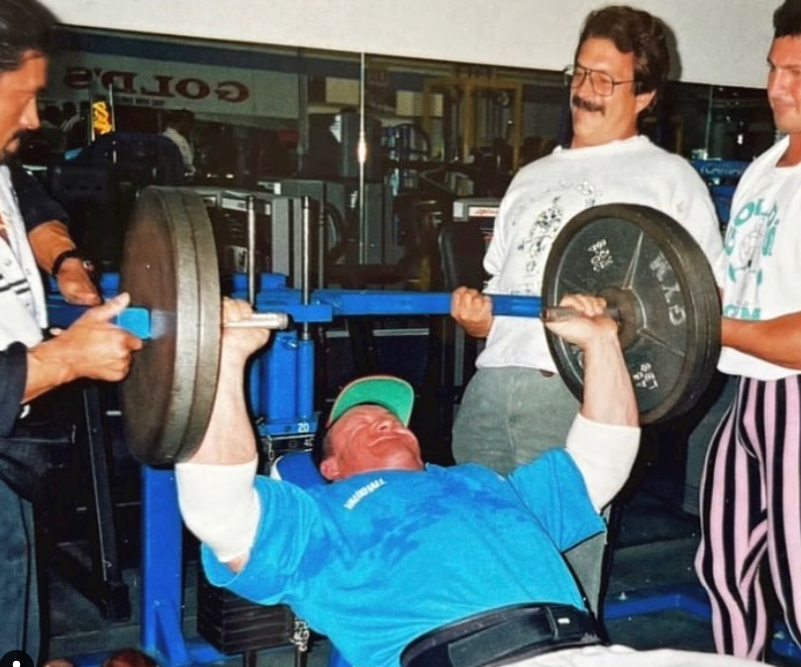Upping the intensity: Mike Mentzer (right) and others help Dorian Yates grind out one more beyond-failure rep of incline presses.
HIT training was a revolution. What started as the mere musings of an eccentric inventor blossomed into a worldwide movement. Motivated by the success of its most prominent adherents, multitudes of bodybuilders have tried high-intensity training through the decades, but few followed HIT’s strictest tenets for long. And yet from its origins in the early ’70s to the Heavy Duty ’80s to Dorian Yates’ domination in the ’90s to the neo-HIT philosophies of this century, high-intensity training has evolved, expanded, and influenced. Spanning a half-century, the story of high-intensity training features visionaries, zealots, sages, and cranks—and some who were all of the above. HIT men. It’s a story of triumphs and tragedies, the greatest victories and the most dispiriting defeats, of science and reason but also commerce and hyperbole, and, above all, the enduring quest to build a better way to build better bodies.
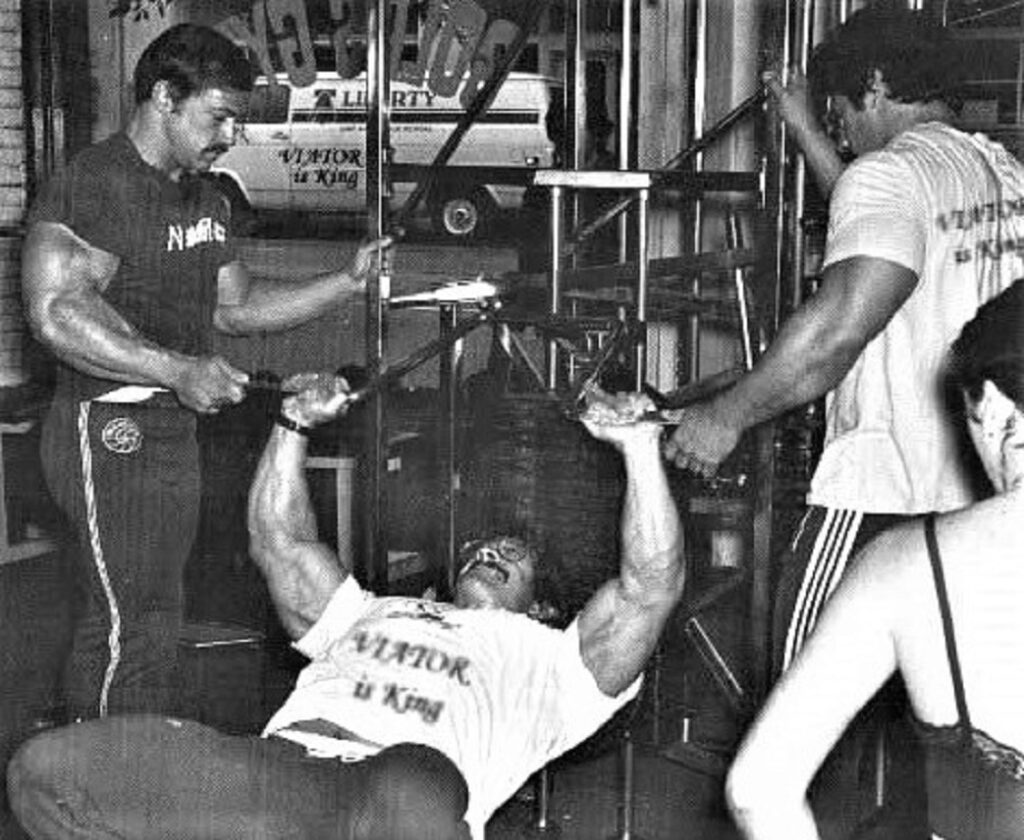
ARTHUR JONES: HIT INVENTOR
In his younger years, Arthur Jones was a globetrotting adventurer, importing and exporting African game and filming TV wildlife shows. In his later years, when his motto was “younger women, faster planes, and bigger crocodiles,” he was the six-times-married, irascible owner of a private airport and wild animal refuge in central Florida. In between, he made his fortune as the inventor of Nautilus machines and fashioned himself as the Copernicus of bodybuilding, bringing scientific enlightenment to the iron age’s faithful.
Born in 1926, the son of two doctors, Jones never finished high school but was a voracious reader of medical texts. Taking up bodybuilding in the ’40s, he was frustrated with the lack of training science and began conducting his own research. After experimenting with cam machines for over 20 years, he introduced his Nautilus line in 1970—the same year his first training article appeared in Ironman magazine. Jones eventually wrote over 100 articles for bodybuilding magazines and his own Nautilus Bulletin, detailing the system that came to be called high-intensity training.
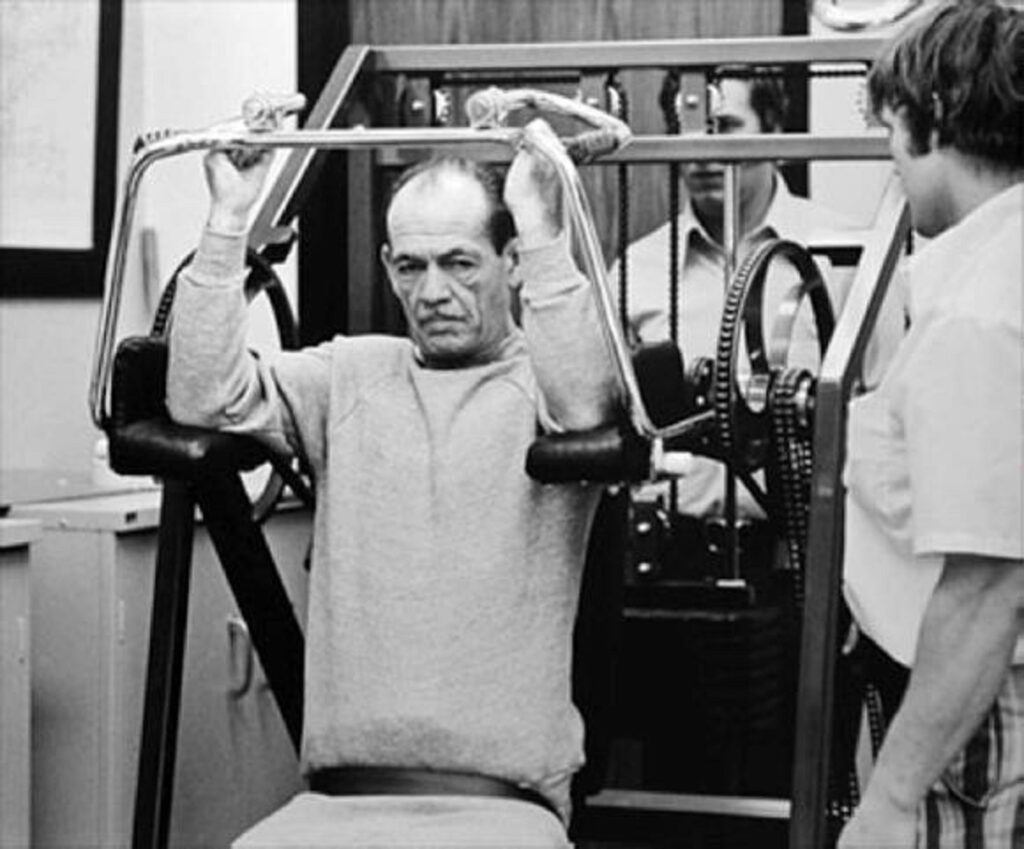
HIT TRAINING: FOUNDING PRINCIPLES
• Growth is correlated to exercise intensity.
• Sets must be pushed to absolute failure, and such sets must be kept to a minimum.
• Workouts must be brief and infrequent.
• Emphasis on the eccentric (negative portion) of reps is crucial.
• To go beyond failure, do pre-exhaust supersets. For example, do a set of dips immediately after triceps extensions.
• No amount of additional sets will compensate for not training with maximum intensity.
CASEY VIATOR: O.G. HIT MAN
At only 18, bodybuilder Casey Viator placed third in the 1970 Mr. America, where he met Arthur Jones. Soon thereafter, he moved to Florida and trained under Jones’ tutelage. The following year, at 19, Viator became the all-time youngest Mr. America. Published in the October 1971 Ironman, Viator’s routine hit the bodybuilding world like a tsunami: three whole-body workouts per week, 20 all-out reps per set, sometimes only one set of an exercise and always very few working sets per bodypart. Staying off stages for most of the rest of the decade, Viator worked for Jones at Nautilus until 1978.
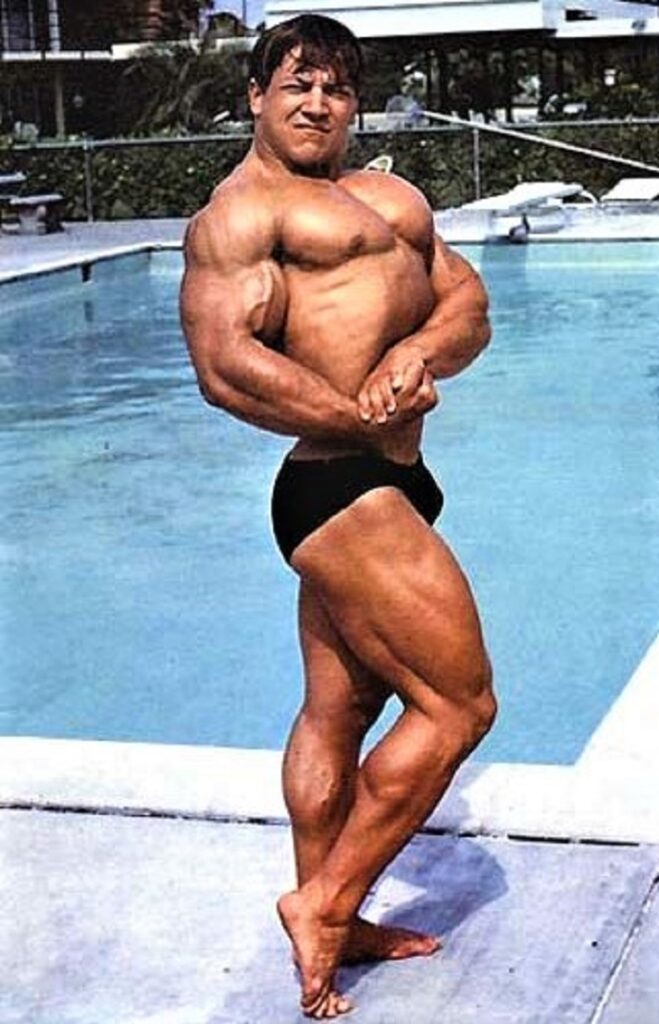
CASEY VIATOR: HIT WORKOUT (LEGS)
Hack Squat — 1 x 20 reps (2 warmups)
Leg Extension — 1 x 20 reps (1 warmup)
Squat — 1 x 20 reps (2 warmups)
Lying Leg Curl — 1 x 20 reps (1 warmup)
Stiff-leg Deadlift — 1 x 20 reps (1 warmup)
THE COLORADO EXPERIMENT
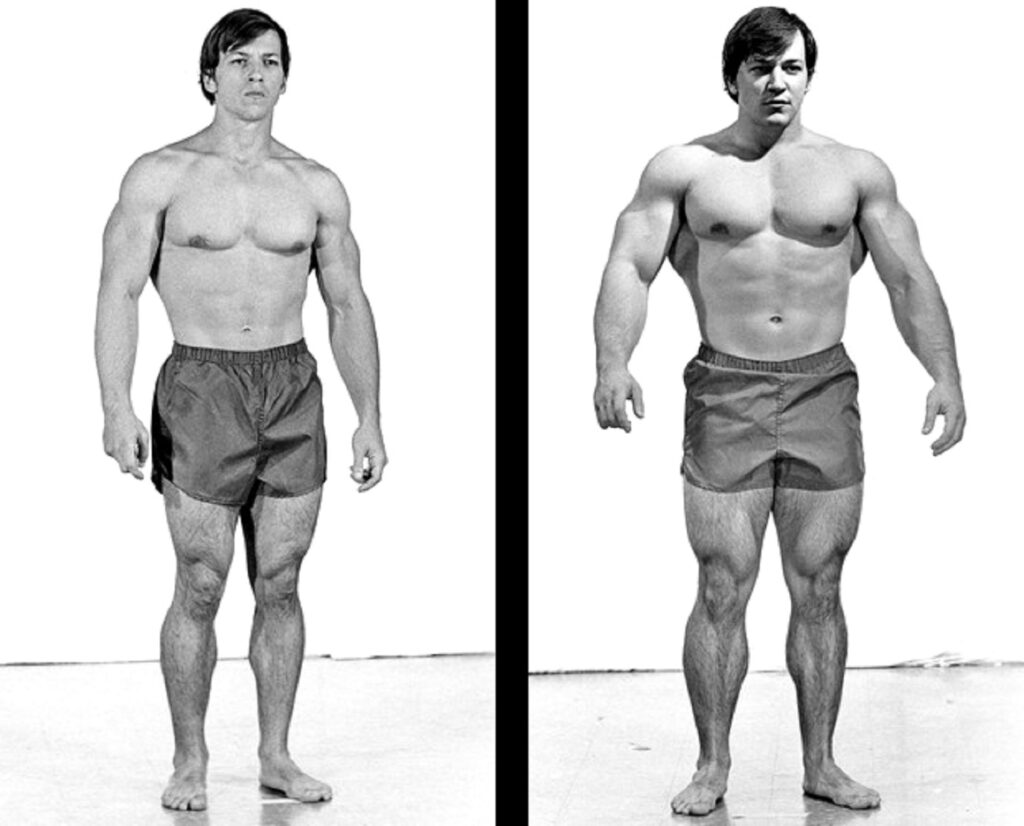
Throughout May 1973, at Colorado State University, Casey Viator underwent a training experiment overseen by Arthur Jones. Reportedly while consuming only a “reasonably well-balanced diet” and without “growth drugs,” he did only 12 low-volume, high-intensity, 30-minute workouts over 28 days. At the end, he was said to have netted just over 63 pounds of muscle. The results are dubious. At the start, his weight was down 33 pounds after an injury. Viator, who was clearly blessed with superior muscle-making DNA, later called it a “lesson in muscle memory,” meaning he was re-gaining what was previously his.
That’s the best spin. His actual addition that May was 45 pounds. The extra 18 was Jones’ conjecture about Viator’s fat loss—though, in fact, the 1971 Mr. America almost certainly gained fat. Mike Mentzer later wrote that Viator was “literally force-fed” and not drug-free. Nonetheless, the Colorado Experiment and its figure of 63 pounds in 28 days was widely featured in advertisements and became part of bodybuilding’s lore, helping sell Nautilus machines and propagate HIT principles.
THE SECRET IS HIGH INTENSITY
“The secret, if there is one, is high intensity. And when you actually train with high-intensity, you don’t need a lot of volume.” — Arthur Jones
MIKE MENTZER: HEAVY DUTY
Just as Casey Viator was introduced to high-intensity training at the ’70 America, Viator introduced it to fellow 19-year-old bodybuilder Mike Mentzer at the ’71 America. Within days, the latter teen had phoned Arthur Jones and revamped his workouts. While a collegiate pre-med major, Mentzer used himself as the subject for workout experiments. Returning to the stage in 1975, Mentzer impressed magazine publisher Joe Weider and was soon penning articles for Muscle Builder & Power on his own high-intensity workout tenets.
Mike Mentzer won the Mr. America in 1976, and, through the remainder of the decade, he wrote of increasingly more advanced techniques. In 1979 the rookie professional won a pro contest and the heavyweight class of the Mr. Olympia (there were two classes then); his brother, Ray, won the Mr. America, becoming the third HIT man to win the title in the ’70s; and their training partner Casey Viator finally made his pro debut. Mike Mentzer had coined a new term for his workout philosophy, “Heavy Duty,” and he was writing two booklets espousing his beliefs. High-intensity training seemed on the verge of transforming bodybuilding.
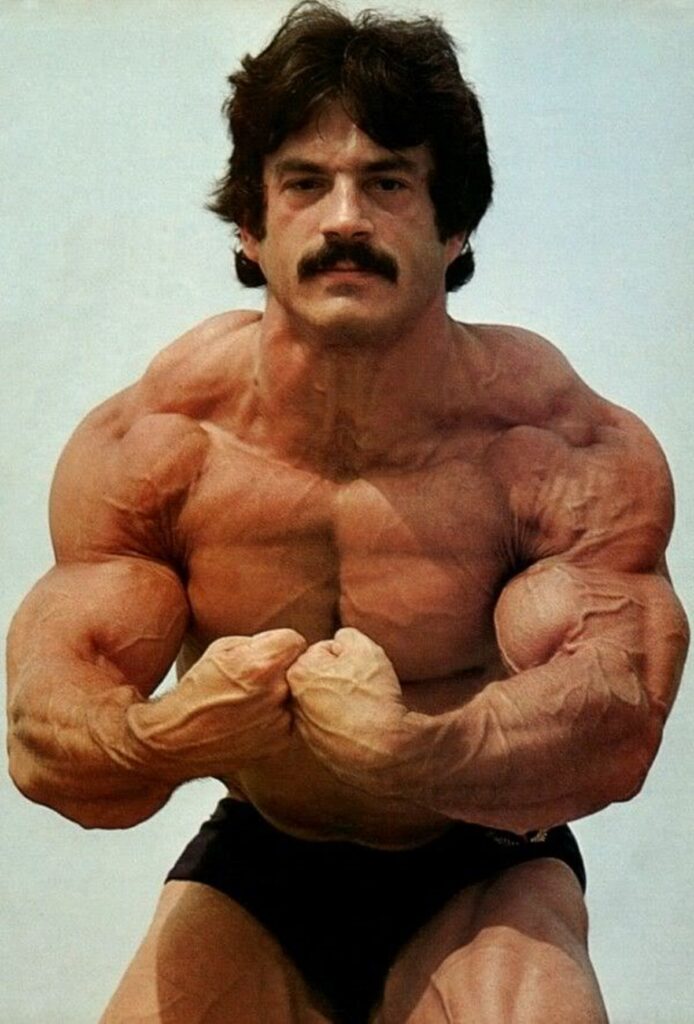
MORE ISN’T ALWAYS BETTER
“If you’re skeptical [of Heavy Duty’s low volume], your subconscious child is telling you that more is better. In some cases, that’s true. More money is better than less. But you can’t take that principle and blindly apply it to exercise and expect to get anything out of it.” — Mike Mentzer
HEAVY DUTY TRAINING PRINCIPLES
• Go to full-rep failure in the 6-9 rep range. Try to grow increasingly stronger in this range.
• Always maintain proper exercise form.
• Push sets past failure with forced reps and negatives. Train with a partner, so he can assist you.
• Rest-pause is another method of transcending failure. Mike Mentzer had a unique method of doing rest-pause. He advised doing a set of four to six maximum reps with rests of 10-15 seconds between reps (and a 20% weight reduction near the end), so, in essence, the set was a series of all-out singles.
• Divide your bodyparts into two workouts, and allow 48 hours between workouts. For example, do workout A on Monday, B on Wednesday, A on Friday, B on Sunday (or Monday, if you prefer to take weekends off).
MIKE MENTZER: HIT WORKOUT (BACK)
Machine Pullover — 2 x 6-9 reps (1-2 warmups)
↕️ superset with
Underhand Pulldown — 2 x 6-9 reps (1-2 warmups)
Barbell Row — 2 x 6-9 reps (1-2 warmups)
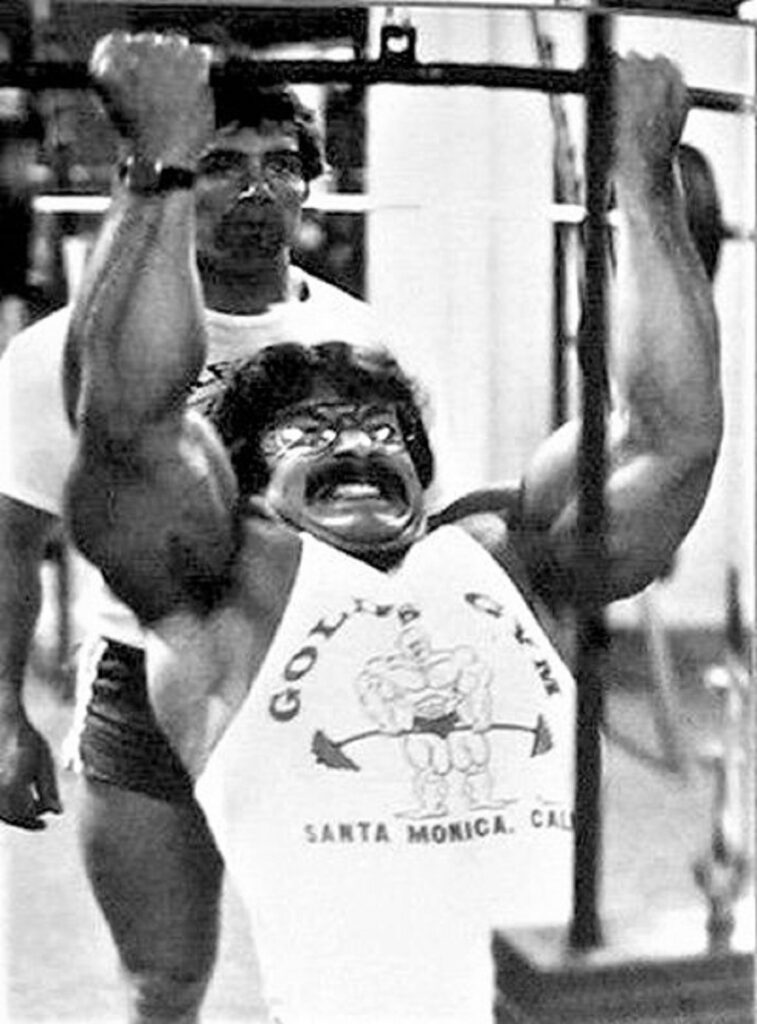
For much more on Mentzer’s training, check out: Mike Mentzer Workout: Complete Guide
NEGATIVE REPS
Like Arthur Jones, Mike Mentzer emphasized the eccentric (negative) halves of reps. One or more partners help raise the weight and then the HIT-trainer lowers it slowly to push sets beyond failure or for sets of eccentric-only reps. There was a negative training movement in the ’80s, with people doing entire workout routines of eccentric-only reps.
MIKE MENTZER’S FALL
In 1980, with the publication of Mike Mentzer’s first two booklets, Heavy Duty and Heavy Duty Journal, high-intensity training was given a new name, and through articles, seminars, and a thriving mail order business, Mentzer secured himself as bodybuilding’s foremost philosopher. At 28 and the reigning Mr. O runner-up, he seemed on the verge of being judged the world’s best bodybuilder, as well. Unlike Jones, Mentzer had no machines to sell, so he recommended free weights without reservations, focusing on a progression of training intensity via forced reps, negatives, and rest-pause. When proselytizing for greatly reduced workout volume and frequency, he often contrasted Heavy Duty with the high-volume, double-split routines of bodybuilding’s previous greats—and none were greater than Arnold Schwarzenegger.
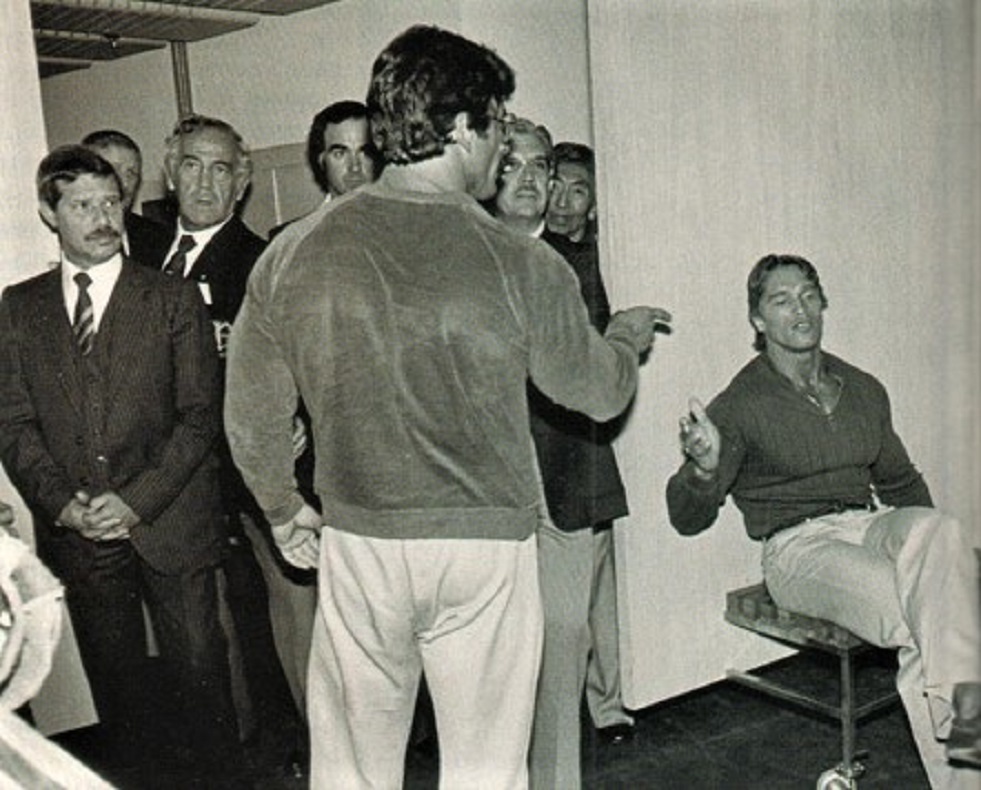
What Mentzer didn’t know until he arrived at the 1980 Mr. Olympia was Schwarzenegger, after five years away, was making a comeback. In what was later portrayed as a legend returning to smack down a brash upstart, including a heated confrontation at the athletes’ meeting, the legend won, the upstart was fifth, the results are still debated. Disillusioned, not only did 28-year-old Mike Mentzer never compete again, but he almost never trained again. He continued to write articles over the next year, worked for Arthur Jones for six months in 1983, edited a short-lived fitness magazine, and then sank into darkness for the latter half of the ’80s, drug-addicted, often destitute and sometimes institutionalized.
Heavy Duty, which seemed on the verge of transforming bodybuilding at the start of the decade, was, like its originator, forlorn just a few years later.
LEE LABRADA: CLASSIC HIT MAN
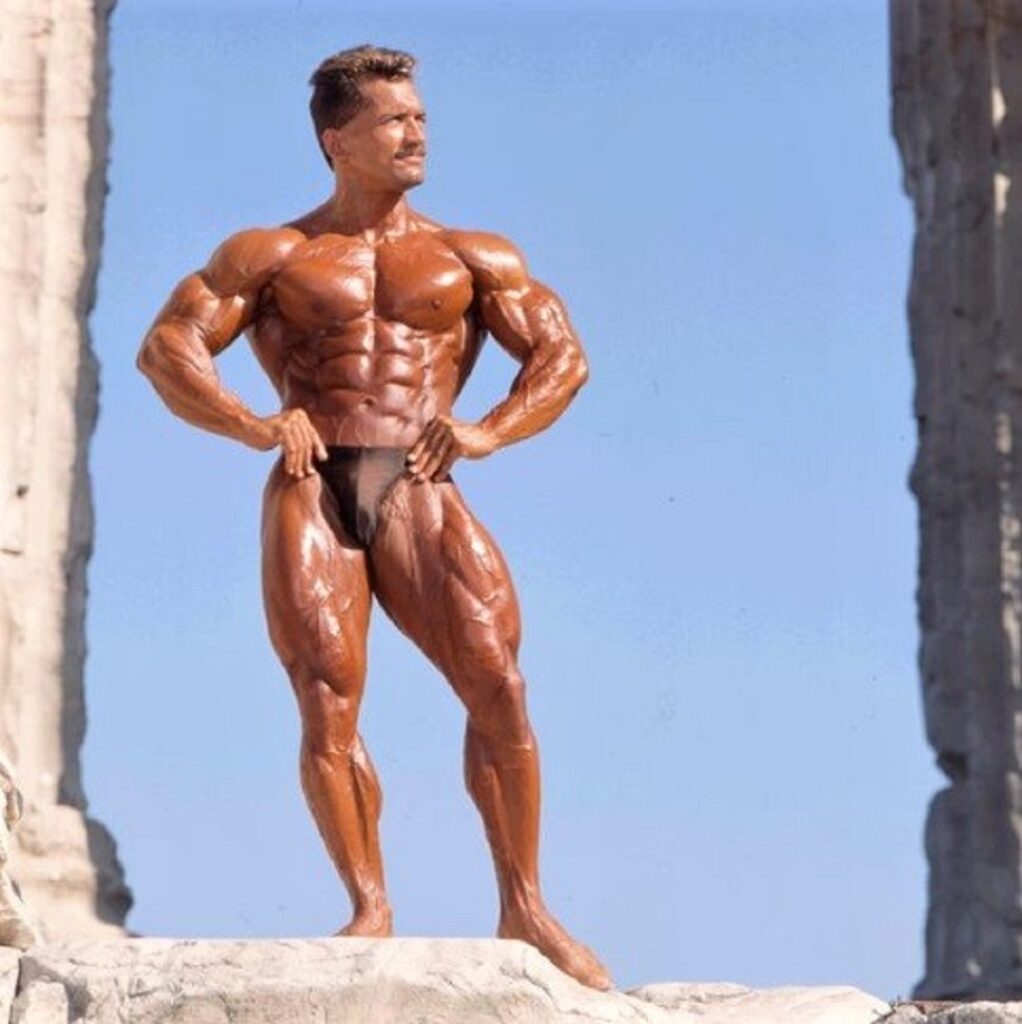
After rocketing to prominence with middleweight wins at both the Nationals and World Championships in 1985, bodybuilder Lee Labrada followed with a stellar pro career (1986-95), making the posedown in all of his 24 pro contests, including seven wins and two Mr. Olympia seconds. Utilizing high-intensity, he pushed sets to failure or beyond, but he did more of those sets—typically six to 10 per bodypart—than Mentzer advocated. What most distinguished the 5’6″ Labrada from the Mentzer brothers, Casey Viator, and Dorian Yates was his physique type. Renown for his classical lines, he won pro shows at 180-190 pounds, proving HIT wasn’t merely for mass monsters.
DORIAN YATES: OLYMPIA HIT MAN
He was 21 and heading nowhere, eking out an aimless existence on the harsh streets of Birmingham, England, when he decided to become a bodybuilder, and for the first three weeks 180-pound Dorian Yates didn’t pick up a weight. Instead, he picked up books and magazines, reading all he could in 1983 on the science of training. Heavy Duty appealed to him from the start (he also read some of Arthur Jones’ original high-intensity training writings), and even more so when the gains came easily. Toiling in Birmingham’s now legendary Temple Gym, young Yates typically did four to eight working sets per bodypart, and six to eight reps per set (more reps for legs and abs).
As Dorian Yates advanced, he pushed sets beyond failure with mostly forced reps, but sometimes partials, negatives, drop sets, and rest-pause. Less than two years after he began training, he took home the biggest trophy at his first bodybuilding contest. In November 1988, he won the British Championships in a landslide. He was 26 and weighed 226 pounds—46 more than five years earlier—and Dorian Yates was a pro.
First, it seemed Mike Mentzer would reach bodybuilding’s summit. Then, in 1982, 31-year-old Casey Viator placed third in the Mr. Olympia—shortly before he vanished from bodybuilding (he made a one-contest comeback in ’95), leading us to wonder, as with Mentzer, what may have been. Lee Labrada was the Mr. Olympia runner-up in both 1989 and 1990, and in the latter contest he was leading after two rounds. Still, the Sandow narrowly eluded HIT-adherents—until the Shadow’s arrival. Yates took the pros by storm, second in his pro debut in ’90 and two wins and an epoch-rocking second in his Olympia debut in ’91. Then, in 1992, weighing an arid 242, he was crowned Mr. Olympia.
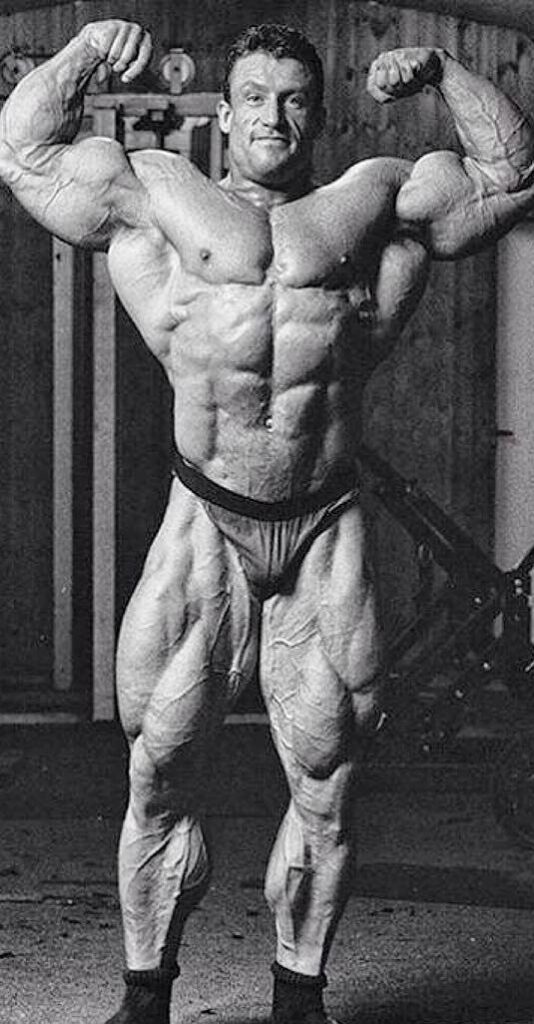
The following year, when Dorian Yates shocked the iron world with never before witnessed levels of grainy thickness—via photos in FLEX magazine in which he weighed 269 (socks included) and on the Olympia stage at 257—it was the apotheosis of high-intensity training. (Over-Shadowed though he was, Labrada was third in the ’93 Olympia.) Yates’ two aforementioned seconds were his only pro defeats, and he won his last 14 contests. Eventually, his brutal workouts took their toll on his physique, and he retired from the stage in 1997 after grabbing his sixth consecutive Sandow trophy. With both a new level of striated size and his philosophy of maximum intensity in minimum workout time, Dorian Yates revolutionized bodybuilding more than any other Mr. Olympia not named Schwarzenegger.
For much more on Yates’ training, check out: Dorian Yates Workout: Complete Guide
PULLING OUT ALL THE STOPS
“If you feel you can attempt a second set, then you couldn’t have been pulling out all the stops during the first set.” — Dorian Yates
DORIAN YATES: HIT TRAINING PRINCIPLES
• Work each bodypart once every seven days.
• Do 2-3 progressive, moderate-intensity warmup sets pyramiding up to the working set.
• Your final moderate-intensity warmup set should also be pushed to near-failure but with a lighter weight and higher reps (12-15) than your working set.
• Do one all-out, beyond-failure set per exercise—the working set.
• When doing working sets, aim for complete failure at 6-8 reps and extend beyond failure with 2-3 forced reps, rest-pause reps, or drop set reps.
• Do four working sets for smaller bodyparts, like biceps, and 6-8 working sets for larger bodyparts, like back.
DORIAN YATES: HIT WORKOUT (SHOULDERS)
Smith Machine Shoulder Press — 1 x 8-10 reps (2-3 warmups)
Seated Dumbbell Lateral — 1 x 8-10 reps (1-2 warmups)
One-arm Cable Lateral — 1 x 8-10 reps (1-2 warmups)
Dumbbell Shrug — 1 x 8-10 reps (1-2 warmups)
(Yates worked rear delts after back with one working set of dumbbell rear laterals.)
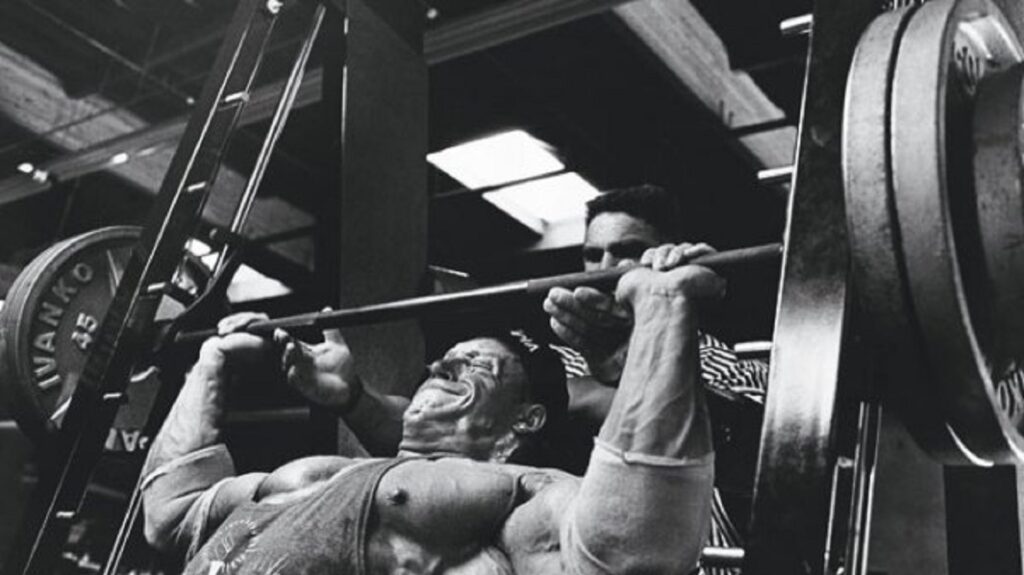
HIT WORKING SET
Dorian Yates typically did only one (all-out, beyond failure) working set per exercise, but this would sometimes be preceded by as many as three warmup sets, and his warmups, though of moderate intensity and (for him) weight, could resemble the hardest sets of others. This spawned a persistent myth, for many have watched him train in a video or in person and declared he did a normal amount of volume. (Similar gotcha declarations have been made about most HIT notables.) In fact, it only highlighted the gulf between his intensity and that of most bodybuilders, for when he trained at their level it was for him mere preparation for the one set that mattered.
LOWER WORKOUT FREQUENCY
In 1992, at the same time he reduced workout volume to one working set per exercise and typically three or four exercises per bodypart, Yates began training bodyparts once every six days instead of thrice every 14. In 1994, he cut back further to once every seven days. News of this had arguably the greatest lasting impact of any high-intensity training principle. Yates trained four days per week and rested the other three, but non-HIT bodybuilders began spreading their splits over six days, taking one day a week off, and like Yates, stressing bodyparts once every seven days. Nearly unheard of pre-Dorian, this is today the most popular split for advanced bodybuilders.
KEEPING UP WITH THE JONESES
After the mid-’80s, ensconced on his Florida compound, Arthur Jones grew increasingly disillusioned with bodybuilders for not widely embracing his views. Meanwhile, the long-time Nautilus director of research, Ellington Darden, expanded on Jones’ high-intensity in several popular books. Dorian Yates regularly used Nautilus (Jones sold the company in 1986), and in the final years of his Olympia reign he grew especially fond of Hammer Strength machines. Hammer Strength was founded in 1989 by Gary Jones, Arthur’s son.
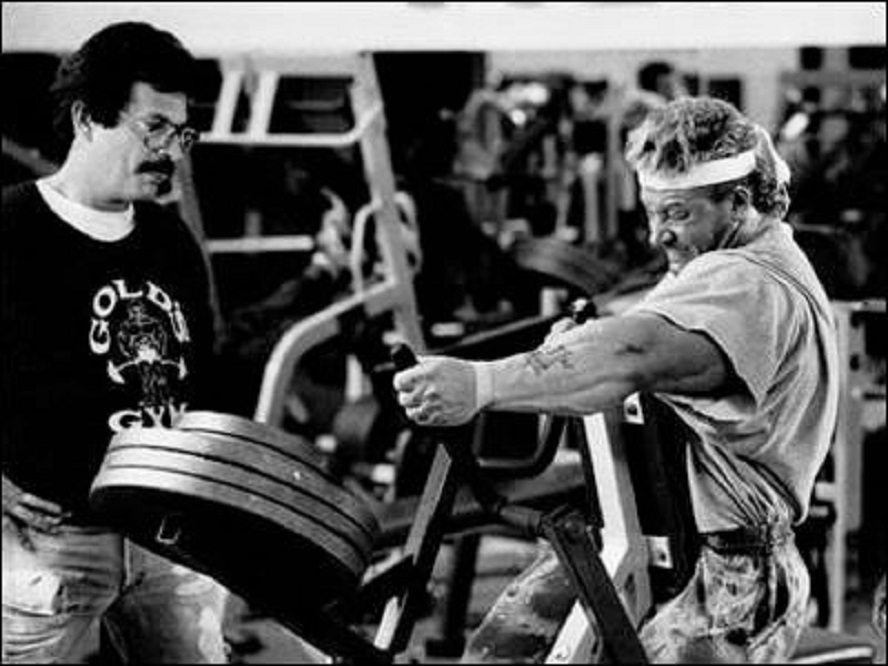
MIKE MENTZER RETURNS
A rehabilitated Mike Mentzer returned to the bodybuilding scene in the 1990s. As Yates validated Heavy Duty, Mentzer launched a personal training business and revised and expanded on his high-intensity theories in bodybuilding magazines. Even as his legacy, bound to Yates, grew, his writings, bound to Ayn Rand’s Objectivism, grew more arcane, and his recommendations grew more extreme, such as working bodyparts with only one or two all-out sets every two weeks.
SUPERSLOW TRAINING
Ken Hutchins was a protégé of Arthur Jones and employee of Nautilus. In the 1980s, he developed a high-intensity program of very slow reps (10 seconds down, 10 seconds up); and in the ’90s brief workouts of 2-8 sets of SuperSlow reps became a minor exercise fad.
BEYOND FAILURE TRAINING
In the summer of 2000, the late Trevor Smith posted his bodybuilding system on a website, detailing how to take a set far beyond normal failure by repeatedly using forced reps and stripping off weight. Such sets can consist of over 50 total reps. Beyond Failure featured four workouts of 45 minutes or less per week, slow reps to eliminate momentum, and the elevated importance of training partners.
MIKE MENTZER’S LEGACY
Mike Mentzer died of a heart attack on June 10, 2001 at age 49, preceding his brother Ray’s death by two days. The ardent individualist who competed in a bodybuilding contest for the final time at 28 in 1980, continues to provoke and inspire.
MAX-OT TRAINING
Developed by Paul Delia, Maximum Overload Training prescribes moderately low volume (six to nine sets per bodypart), 30-40-minute workouts, and low-reps with basic exercises. Max-OT advocates using weights so heavy that failure is reached in no more than six reps but diverges from high-intensity training in cautioning not to go beyond failure.
For much more, check out: Max-OT Training Guide
DOGGCRAPP TRAINING
Created by Dante Trudel circa 1991, this bodybuilding training philosophy’s scatological moniker was Trudel’s screenname when he first posted his workout beliefs on an internet message board in 2000. His original post grew to 118 pages, and in subsequent years as his writings were pasted all over the Net, Doggcrapp (DC) broadened into an underground phenomenon. In 2006, after FLEX published my account of a DC workout by pro bodybuilder David Henry and an interview with Trudel, everyone knew. DC places a primacy on continuous strength gains (typically in the 11-15 rep range). It shares with the high-intensity training of Jones and Mentzer minimal workout volume (one working set for most exercises) and an emphasis on journeying beyond failure, in DC’s case with rest-pause, drop sets, and static contractions. But it also diverges from the HIT of the previous decades by prescribing a greater training frequency (hitting bodyparts three times every 14 days) and the use of features like continuous exercise rotations.
For much more, see: Doggcrapp Training Guide
ARTHUR JONES’ LEGACY
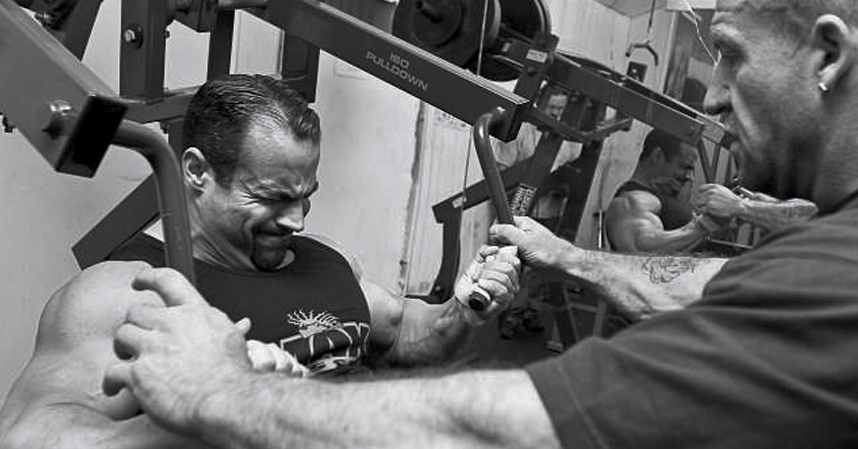
Arthur Jones passed away in 2007 at 80. His famed first pupil, Casey Viator, died of a heart attack on his 62nd birthday in 2013. From the primacy of intensity and recuperation to the way his machines helped introduce weight-training to the masses, Jones’ impact on workouts was immense and is ongoing. It’s highly unlikely high-intensity training or one of the neo-HIT philosophies will ever become the dominant workout methodology. Still, high-intensity training’s influence has been wide and profound, and, as it continues to evolve, HIT will no doubt continue to transform the way bodybuilders train, recover, and grow.
Related content:



































